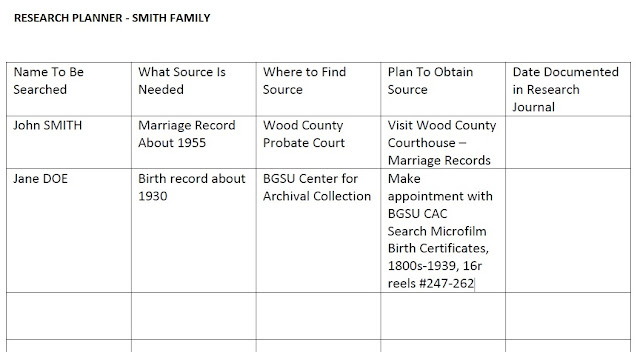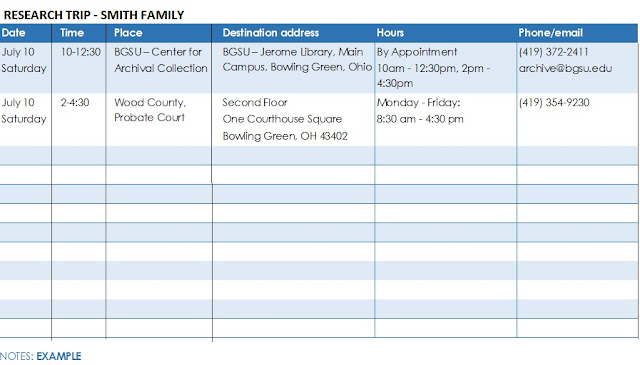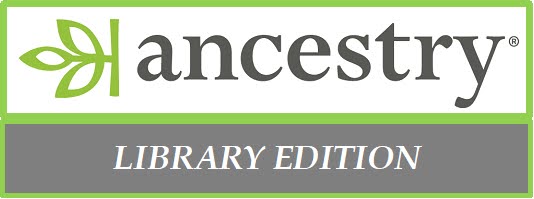 |
| Photo courtesy of Linnaea Mallette on PublicDomainPictures.net |
Death records of our ancestors are one of the primary sources that family historians are constantly searching for. They can lead to information on other family members, burial sites, cause of death and estate records.
Formal death records are usually available from 1900 onward in the U.S.. A few states, like Ohio, started recording death information in the latter half of the 19th century. Most New England states recorded all vital records much earlier. Tombstones and church records are often used as substitutes for formal death records.
But what if death record, tombstone or church records aren't available?
Another possible substitute is the Federal Mortality Schedules, if your ancestor died in the 12 months prior to the enumeration of the U.S. Federal Censuses in 1850, 1860, 1870, 1880 and 1885.
The federal government wasn't receiving information on deaths from the states and they wanted to know causes of death and if certain ages or occupations were more susceptible. With the Mortality Schedules, the national policy makers had countrywide death statistics for the first time.
What information do they contain?
The information found in the schedules varies with the year and the caprice of the individual enumerators.
1850-1860 - also only place a slave ancestor's death might be recorded
- Name
- Age at last birthday
- Sex
- Race - free or slave
- Marital status
- Place of birth
- Profession, occupation, or trade
- Length of residence in county
- Month in which person died
- Disease or cause of death
- Number of days ill
 |
1850 Mortality Schedule from Mecklenburg County, North Carolina
NOTE: the red arrow indicates column where free/slave status is listed.
Accessed from Ancestry Library Edition on 7 June 2021.
|
 |
1850 Mortality Schedule from Woodford County, Kentucky.
This enumerator chose NOT to list enslaved people by name.
Accessed from Ancestry Library Edition on 7 June 2021. |
 |
Excerpt from the 1860 Tuscaloosa County, Alabama Mortality Schedule.
Accessed from Ancestry Library Edition on 7 June 2021.
|
1870
- If father and/or mother were foreign born
- Removed the question about how many days the deceased was ill
- Family number included which ties the entry back to a specific entry in the population schedule. (If it was filled in.)
 |
Excerpt from 1870 Mortality Schedule for Brooklyn, King's County, New York.
Note the columns for if Father or Mother was foreign born. Also note the number of people
who died of contagious diseases, as might be expected in crowded conditions.
Accessed from Ancestry Library Edition on 7 June 2021. |
 |
Excerpt from 1870 Mortality Schedule for Cedar Township, Black Hawk County, Iowa.
Note that the individual on the first line does not have a family number associated with her.
Sylvia MUNSON, died in October 10, 1869 (underlined in red) but she was associated with family
number 85 (red circle) in the 1870 Population Schedule.
Accessed from Ancestry Library Edition on 8 June 2021. |
 |
Family #85, Levi and Lucy Ann MUNSON is the household where Sylvia (above) was living at the time of
her death. Is there a familial relationship?
Accessed from Ancestry Library Edition on 8 June 2021. |
1880
- Place of birth of mother and father
- How long they had resided in the county
- Where the disease was contracted if not at place of death
- Name of attending physician
- Family number included which ties the entry back to a specific entry in the population schedule. (If it was filled in.)
 |
Excerpt from the 1880 Mortality Schedule for Guyan Twp., Gallia County, Ohio.
John Williams died at the age of 84, the oldest person listed on the page. He and his parents were born in "Virginia". This
is important because at least one other source lists his birthplace as Pennsylvania. He had resided in Gallia County for 64 years,
giving him an arrival date of 1816, a few years later than the county history claimed. The family he was living with was
numbered #149
Accessed from Ancestry Library Edition on 8 June 2021. |
Strangely, Ancestry Library Edition did not have the image for family #149. There was a gap in their scanned images, jumping from family #143 to #195, and from page 16 of the enumeration schedule to page 23. The image below was taken from FamilySearch.org:
 |
Who is this Rucker family? What is their relationship to John WILLIAMS? Is Susan RUCKER, John's daughter?
Accessed from FamilySearch.org 8 June 2021 |
- The Federal government offered to partially reimburse states that wanted to take a census in 1885. Colorado, Florida, Nebraska, and the territories of Dakota and New Mexico participated. However, the territories' mortality schedules are not on Ancestry, FamilySearch or Heritage Quest.
 |
The 1885 Mortality Schedule looks like the earlier ones, but was taken only 5 years after the 1880.
Few states took advantage and even fewer of the schedules survive.
Accessed from Ancestry Library Edition on 8 June 2021.
|
Where do you find Mortality Schedules?
Ancestry - both Ancestry.com and Ancestry Library Edition

Once you have accessed Ancestry, either through your personal subscription or at a local library, click on Search on the menu bar.
Choose "Census & Voter Lists" from the drop down Menu.
From there, look to the right under "Narrow by Category"
Choose "U.S. Federal Census Collection".
Next scroll towards the bottom and choose "U.S. Federal Census Mortality Schedules, 1850-1885"
That will take you to the page for the schedules. From there, you can browse by selecting year, state and county, or use the main search area to search for an individual name.
HeritageQuest - always free from home by using your library card
HeritageQuest is owned by Ancestry.com and operates in the same way. It does not have all the same data sets as Ancestry, but is a great at-home alternative for census records.
Once you have accessed HeritageQuest, click on the link on the home page to search the Mortality Schedules.
FamilySearch
FamilySearch.org is the free genealogy website provided by the Church of the Latter Day Saints (Mormons) and is available anywhere there is internet access. It requires that you sign up for a free account to view many of the images. No, the free account does not come at the price of being inundated by commercials.
Once you are at the site, choose "Search from the menu.
From the drop down menu, choose "Catalog"
In the "Place" search bar, type in "United States, " followed by the state for your ancestor. Example:
United States, Ohio" and then hit the "Search" bar below.
That displays the page of all of the FamilySearch holdings for that state. Scroll down to the Census entries and choose the year you want.
In the sample below, "United States, Ohio - Census - 1880 (8)" is selected:
This screen shows the selections under that heading. Do not chose the item with an individual's name as the author because that refers to books and manuscripts, most of which have not been microfilmed or digitized. Choose the item where the author is listed as "United States Census Office".
Click on the camera icon to start browsing the digitized microfilm.
If the film is only available to view at a Family Search Affiliate Library, the little camera icon under "Format" will also have a little key next to it. To view this image, visit one of the Medina County District Library branches.
If the Mortality Schedule isn't on any of the big genealogy sites, try these depositories:
- National Archives - the National Archives has microfilm copies that usually can be ordered. Check out the microfilm catalog in the "Where to Find these Records" box on the right. Forms that show the column headings for the Mortality Schedules can be found HERE.
- State historical societies, archives and state libraries. (pp. 24-25 of Stephen Charter's work listed below under Sources)
- Printed indexes - Check WorldCat to see who owns it. Remember! Printed indexes are a last resort. You always want to see the full document for information not listed in the index.
Coverage/Completeness of the records
- These states' mortality schedules are NOT listed on Ancestry or Heritage Quest:
- Florida
- Indiana
- Oregon
- Rhode Island
- Vermont, 1850-1860
- Wisconsin, 1880
- These states, while not listed on Ancestry/HeritageQuest, ARE HELD at FamilySearch.org:
- Florida 1860, 1880
- Indiana, 1860-1880
- Wisconsin, 1880
- Before the National Archives was created, the government offered the original mortality schedules to each of the states. If the state did not accept, the manuscripts were sent to the National Library of the Daughters of the American Revolution (DAR).
- States that were still U.S. territories are not covered.
- 1870 is missing for 7 states: Delaware, Florida, Indiana, Mississippi, Missouri, Ohio, Rhode Island, Tennessee.
- The Census Bureau has a list of known coverage of the mortality schedules: https://www.census.gov/history/pdf/mortality.pdf
Mortality schedules are useful for documenting documenting Africa American, Chinese, and Native American ancestry as well as tracing epidemics and diseases.
Follow up the information found in the Mortality Schedules by searching for obituaries, mortuary records, cemeteries, and probate records. They can also provide clues to migration points and they supplement information found in the population schedules.
And as with other census and vital records, your ancestors' deaths may not have been recorded.
Sources:
- Theusch, Cynthia, "Mortality (Non-Population) Schedules", Allen County Public Library,
- Hendrickson, Nancy, "Searching in a Mortality Schedule on Ancestry.com" "Family Tree Magazine, https://www.familytreemagazine.com/websites/ancestry-help/ancestry-mortality-schedule-tutorial/
- Szucs, Loretto, et al, The Source: A Guidebook of American Genealogy, 2006.
- Szucs, Loretto, et al, Finding Answer in the U.S. Census Records, 2001.
- Charter, Stephen, The United States Census Mortality Schedule Register, http://www.familysearch.org/library/books/records/item/59602-united-states-census-mortality-schedule-register
- Crow, Amy Johnson, "Using Mortality Schedules: An Overlooked Source for Genealogy" https://www.amyjohnsoncrow.com/using-mortality-schedules-an-overlooked-source-for-genealogy/ , 2019
- "Mortality Schedules", United States Census Bureau, https://www.census.gov/history/www/genealogy/other_resources/mortality_schedules.html


















































